Jim Laker, while recalling his spell to Sir Don Bradman in the Lords test of the 1948 Ashes series, said Bradman seemed to know where the ball was going to pitch, what stroke he was going to play and how many runs he was going to score.Talk to any batsman and hed probably tell you that hed give anything to have that Bradman like feeling each time he went out to bat. When in prime form, the ball hits the middle of the bat more often than not and even the edges fetch runs. And when the fabled form deserts you, everything from the simplistic back-lift to the routine getting in line of the ball goes terribly awry.Thats when the coaches and pundits talk of doing the proverbial basics. And for top-flight international cricketers, this entails to getting back to their good old scoring days. Heres a look at five cricketers that suffered a slump and returned to domestic cricket with the intent of regaining their touch.
#5 Irfan Pathan
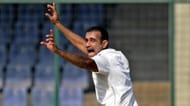
When Irfan Pathan burst onto the international scene in the 2003-2004 Border-Gavaskar Trophy, he was hailed as the “blue-eyed boy” of Indian cricket. And when the ICC labeled him as the 2004 Emerging Player of the Year, he seemed destined for greatness and a long international career.
But in 2005, his bowling form began to dip. However, when Greg Chappell took over the reins of the Indian team, Pathan’s metamorphosis began as a bowling all-rounder. Despite his new-found addition, the Baroda lad’s bowling began witnessing a steady decline.
By the start of 2006, he wasn’t a potent bowling force anymore - having lost pace and swing. This resulted in him being sent back from a South Africa tour and earning the dubious distinction of becoming the first Indian player to be sent home for poor performance.
The message to Pathan however, was to return to domestic cricket and get his groove back. While the left-hander scored an 82* against U.P upon return to Ranji Trophy, his match bowling figures of 3/167 didn’t impress.
He, however, fared better in subsequent games against Tamil Nadu and Mumbai with figures of 5/92 and 7/96. On the back of this performance, Pathan returned to the Indian ODI squad but failed to land a game in the Caribbean World Cup.
His moment, however, came in the inaugural World Twenty20 in South Africa. After bowling a constricting spell of 3/16, Pathan earned the Man-of-the-Match award in the Final to seal his comeback.
#4 VVS Laxman
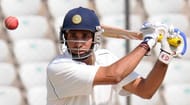
Much before Ian Chappell branded him as “Very Very Special”, Laxman made heads turn in the domestic circuit with his stroke-play and elegant wrist work. On the back of superlative scores in consecutive Ranji seasons, Laxman was picked to play against the visiting Proteas at Ahmedabad in 1996.
A fifty in the second innings of his debut was followed by two failures in the second Test at Kolkata. Despite being persisted with on the South African and Caribbean tours, Laxman failed to bring in the big score to seal his place in the side.
Asked to open, the Hyderabadi enjoyed success in patches and despite a 95 against Australia at Calcutta in 1998, he lost his opening spot to Ajay Jadeja on the New Zealand tour later that year. A duck on his ODI debut in 1998 and a dry run in limited overs cricket that year witnessed him being dropped from the ODI side. And after a string of low scores against Pakistan in the 1999 series and in the Asian Test Championship, Laxman lost his place in the Test team as well.
Determined to prove his worth, Laxman returned to first-class cricket in 1999. After nine matches in 1999-2000 Ranji Trophy season, Laxman had amassed a staggering 1,415 runs at an average of 108 with eight centuries. This was a performance that couldn’t be ignored and the Laxman found a spot on the Australian tour in 2000.
His 167 in the third at Sydney showed the superlative talent he possessed. Laxman returned from the tour and continued to play domestic cricket while being adamant of playing in the middle-order. And when he was recalled to the side in the home series against Australian in 2001, he made most of the opportunity.
His 281 in the second innings of the second Test at Eden Gardens denied Steve Waugh’s Australians a 17th consecutive Test win. More importantly, post the mind-boggling innings, Laxman was hard to ignore and would go to become one of the greats in Indian cricket.
#3 Kevin Pietersen
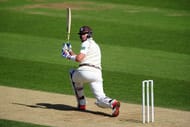
When the outspoken right-hander returned to Surrey earlier this year, he was keen prove beyond all doubt that he still had it in him to play the longer version of the game. And in doing so, he wished to reclaim his right to wear English colors again.
When offered a lifeline by the incoming ECB chairman Colin Graves, Kevin Pietersen wasted no time in giving up contracts with the IPL and Caribbean Premier League and re-signing with Surrey. And his return to English domestic cricket witnessed Pietersen hammer a blistering 170 against MCC Universities Oxford. It wasn’t since the Old Trafford Ashes Test in 2013 that Pietersen had scored a hundred in any form of the game.
The hundred gave the observers plenty to chat about the probable return of Pietersen to the English Ashes squad. A month later, he took his dogged determination to an all new level as he brought up his highest ever first-class score of 355 not out against Leicestershire. The staggering innings was laced with 36 boundaries and 15 sixes. Sadly, as Pietersen was piling on the runs, Andrew Strauss was informing reporters at Lords that a recall was not in store.
#2 Rahul Dravid
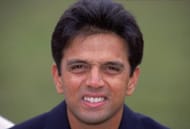
When Sachin Tendulkar gave up his captaincy in March 2000, the mantle fell on Sourav Ganguly and Dravid become his deputy. In his first series as vice-captain, Dravid scored 208 runs in five matches at an average of 41.60. Subsequently, in a tri-nation series at Sharjah, the Indians fared poorly and failed to make the finals and Dravid averaged a paltry 22.25.
The 1999-00 season wasn’t particularly fruitful for Dravid and barring a hundred against New Zealand at Mohali, he had no other big score. It was at this stage and in the backdrop of the match-fixing scandal that rocked international cricket that Dravid decided to return to domestic cricket.
Keen on testing his skills in English condition, Dravid decided to play county cricket and in April 2000 he debuted for Kent. In just his second game for Kent, Dravid scored an 182 against a touring Zimbabwe side. In a high-profile clash against Hampshire, Dravid faced off against Shane Warne. Walking out at 15/2, Dravid held fort for 295 balls while scoring 137 in what was to be his maiden county hundred. Dravid spearheaded Kent’s batting efforts that season scoring two hundreds and eight fifties while notching up 1,221 runs in 16 matches at an average of 55.50.
Returning to the Indian team for the 2000 ICC Knockout Trophy, Dravid played a crucial role in the side’s march to the Final. Despite losing to New Zealand in the Final, Dravid scored 157 runs at an average of 52.33 with two fifties in four games.
#1 Sachin Tendulkar
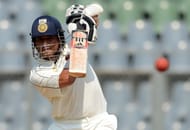
Leading up to the high-profile England tour of India in November 2012, Tendulkar was faced with a slump in form. It was then that he decided to turn out for Mumbai in a Ranji Trophy match against Railways. The game created a buzz as Tendulkar was playing his first Ranji Trophy match in three years.
As the game progressed, Tendulkar flourished while scoring a blistering 137 from 136 balls with 21 fours and three sixes. On the back of this hundred, Tendulkar returned to the India side for the Test series against England. The series ended in a losing cause for India and Tendulkar registered just one fifty.
Despite speculation over his international career, Tendulkar decided to play the knockout stages of the 2012-13 Ranji Trophy season. He scored a sublime 108 against Baroda in the quarter-final and then a 56 against Services in the semi-final in a campaign that saw Mumbai win the Ranji Trophy for the 40th time.
Brand-new app in a brand-new avatar! Download CricRocket for fast cricket scores, rocket flicks, super notifications and much more! 🚀☄️
